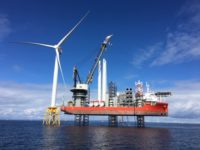Investing in our nation’s infrastructure has the potential to go beyond creating jobs and repairing bridges, tunnels and roads. It can set us on a trajectory for a more sustainable way of life if we start to refashion how we think about public works. Maximizing taxpayer return on these critical investments demands a next generation of infrastructure that is capable of multitasking—working in harmony with, not against, natural systems. This approach should be embedded in communities, offering social, cultural and technical values that can wean us from our petroleum dependence and help us deal with climate changes.
Implementing such multipurpose, integrated projects demands new ways of working, including effective regional planning, transformational leadership and unprecedented interagency and cross-sector collaboration. The industry also must change by developing new design and construction management skills.
Today’s sewers, landfills, waterworks, bridges, power grids, rail systems, ports and dams are products of fragmented planning and regulatory regimes. By contrast, nature networks by combining energy, hydrological and waste-handling functions; it creates synergies among living things. Advanced infrastructure projects similarly can provide several services from a single location by optimizing available assets.
Examples of multitasking infrastructure can be found worldwide. In Australia, photovoltaic-covered highway-noise barriers supply power to local residential areas without transmission losses. Across Europe, grassy areas separate light- rail and street-car corridors, providing reservoirs for stormwater, relief from urban heat-island effect, sound dampening and visual delight. A new bridge in Holland similarly is designed to convey several public utilities along with multiple lanes of vehicular traffic, tramlines, bicycle lanes and sidewalks.
Building one multipurpose structure requires less real estate, eliminates redundant facilities and produces less construction-related disruption. For example, New York City now is developing a water-filtration plant that will be underneath a golf course.

BROWN
Infrastructure also can capitalize on natural processes. Daylight can be restored to dark urban canyons using rooftop heliostats—mechanisms that can track and bend sunlight, as demonstrated at Manhattan’s Battery Park City. Across the East River, debilitated Queensboro Plaza is becoming a verdant park and transitway that processes stormwater and mitigates air and noise pollution. Inspired by nature’s example, underwater tidal-energy turbines now are designed to avoid stress failures by folding flat in strong currents, as sea grasses do.
Local infrastructure is more secure and is more efficient than centralized systems because it capitalizes on local features and climate. It also can perform social functions. For example, an innovative solar-powered desalination plant in the Canary Islands produces freshwater, while its structure forms the backdrop for an outdoor performance venue called the Teatro del Agua. Oregon’s Willamette water-filtration facility accommodates community meeting spaces while showcasing its processing methods, as does the innovative municipal wastewater-treatment plant in Hiroshima, Japan.
Climate change demands infrastructure address liabilities such as transportation and power- transmission assets exposed to storm-related damage as well as depletion of water resources. In Oman, a region stressed by water scarcity and population growth, seawater greenhouses will address freshwater scarcity and food problems by distilling freshwater from seawater, then using it to irrigate crops.
Creating technical solutions for next-generation infrastructure may be easier than transforming political and regulatory institutions and enabling complex teams to undertake multidisciplinary projects. We need a culture that fosters innovative leadership, public-private partnerships, vigorous research and development programs, and interdisciplinary design leadership. We need metrics to evaluate projects according to the triple bottom line of economic, environmental and social returns on investment.
Long-term, our global stability is inextricably linked to this kind of holistic and integrative problem-solving.


Post a comment to this article
Report Abusive Comment